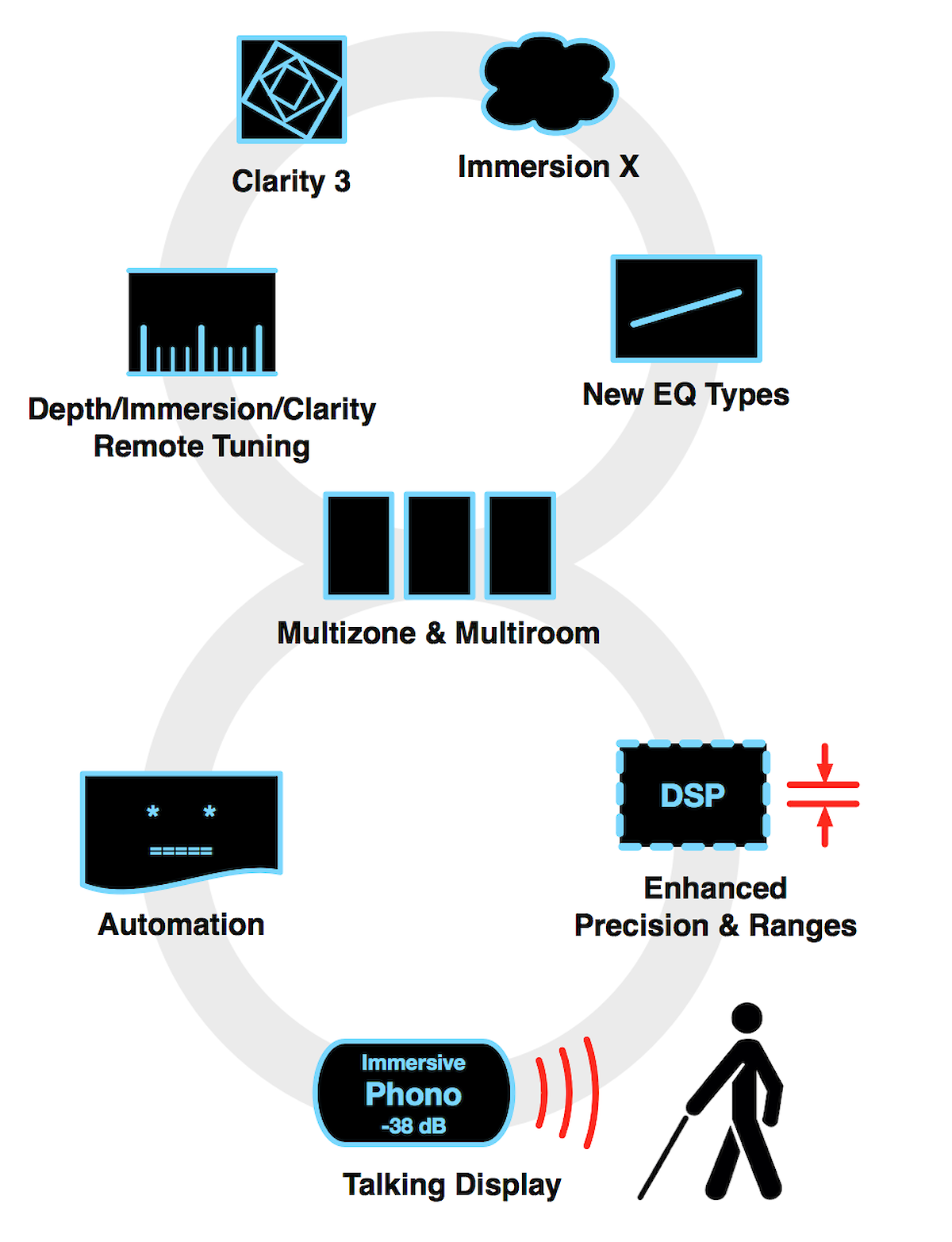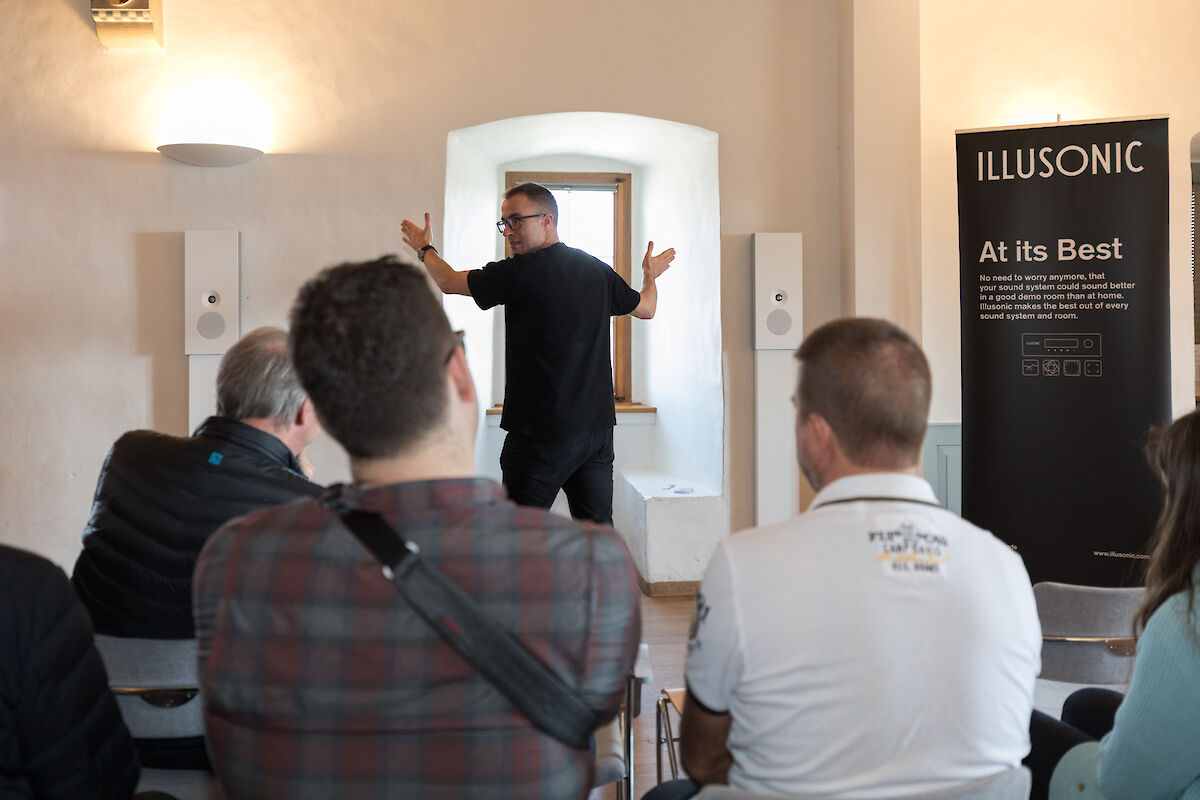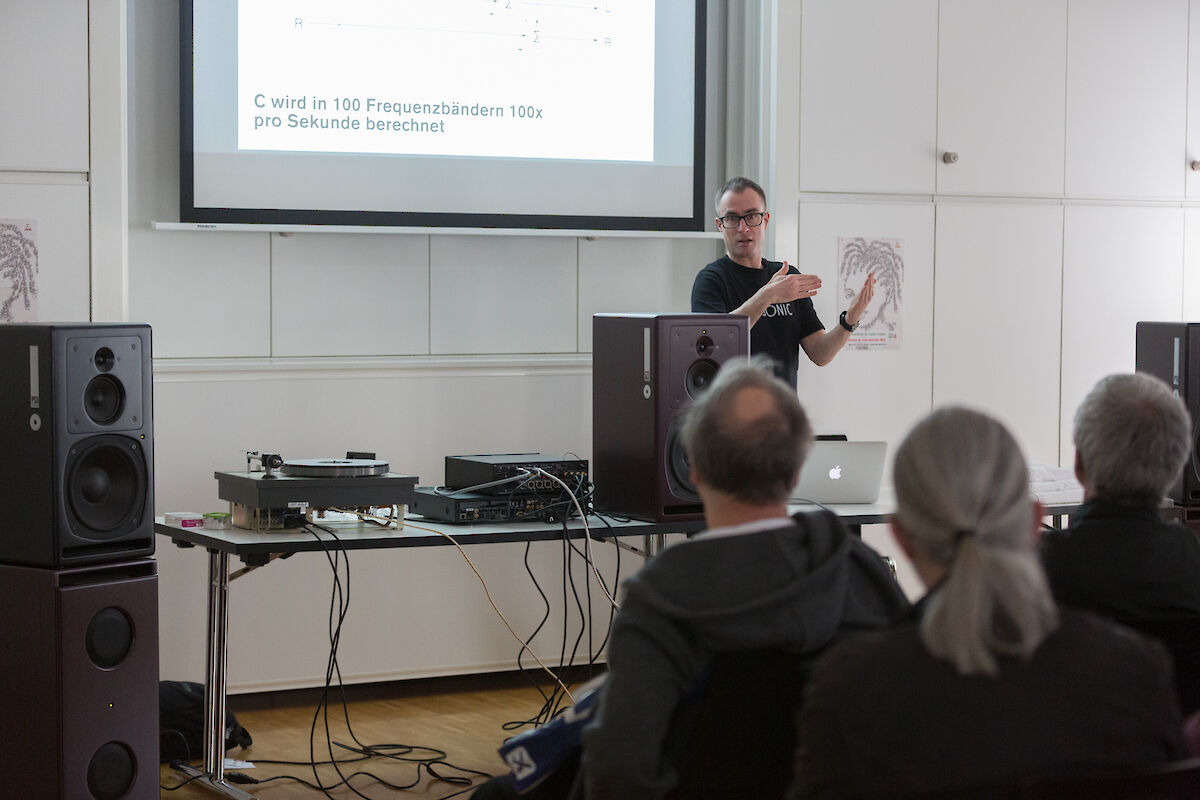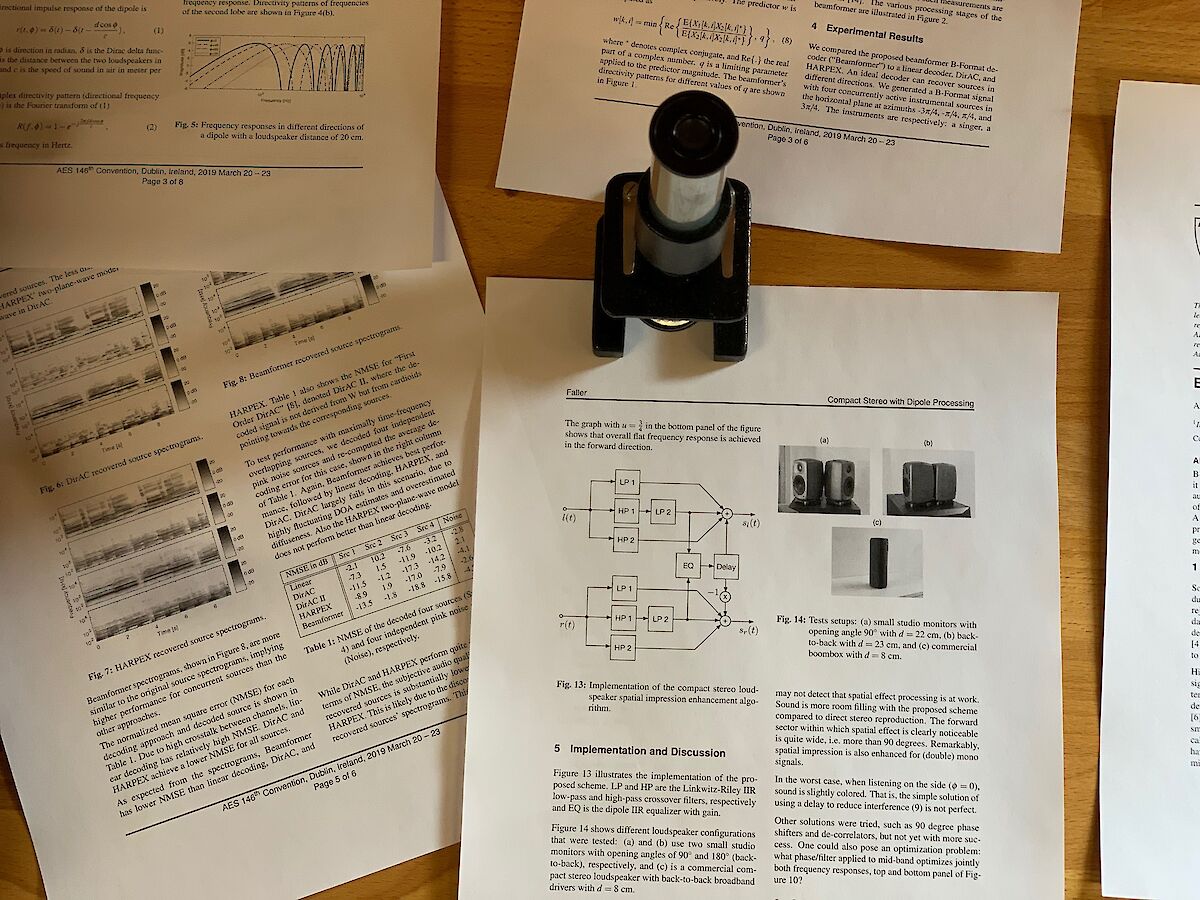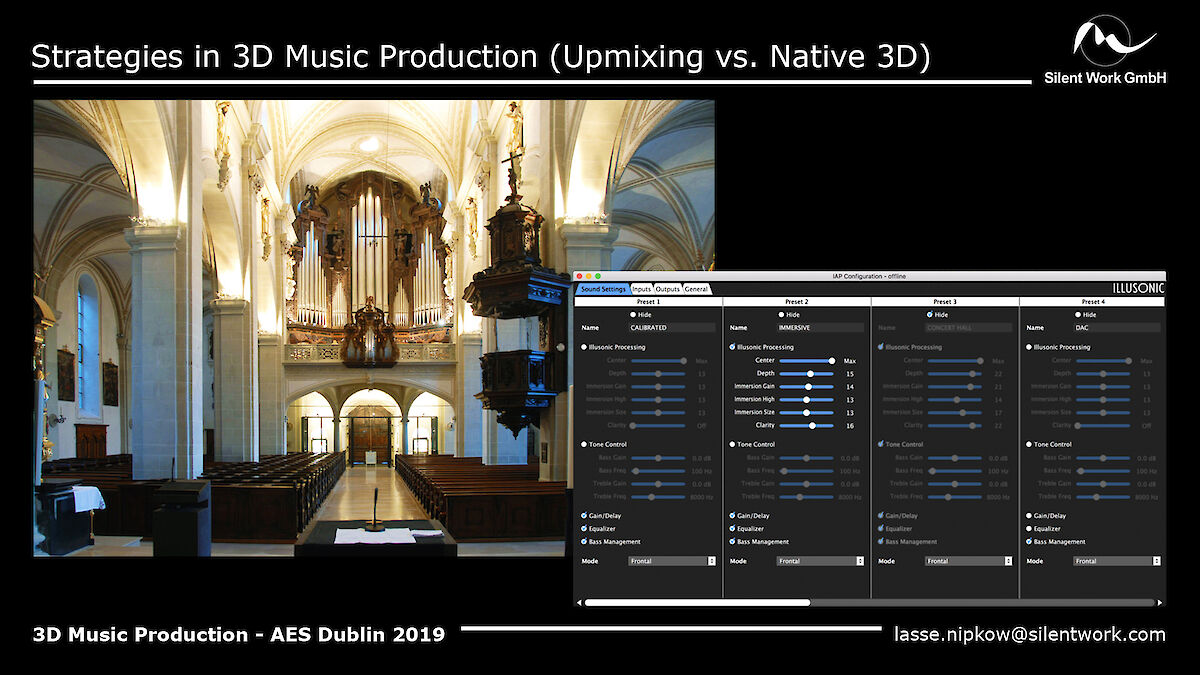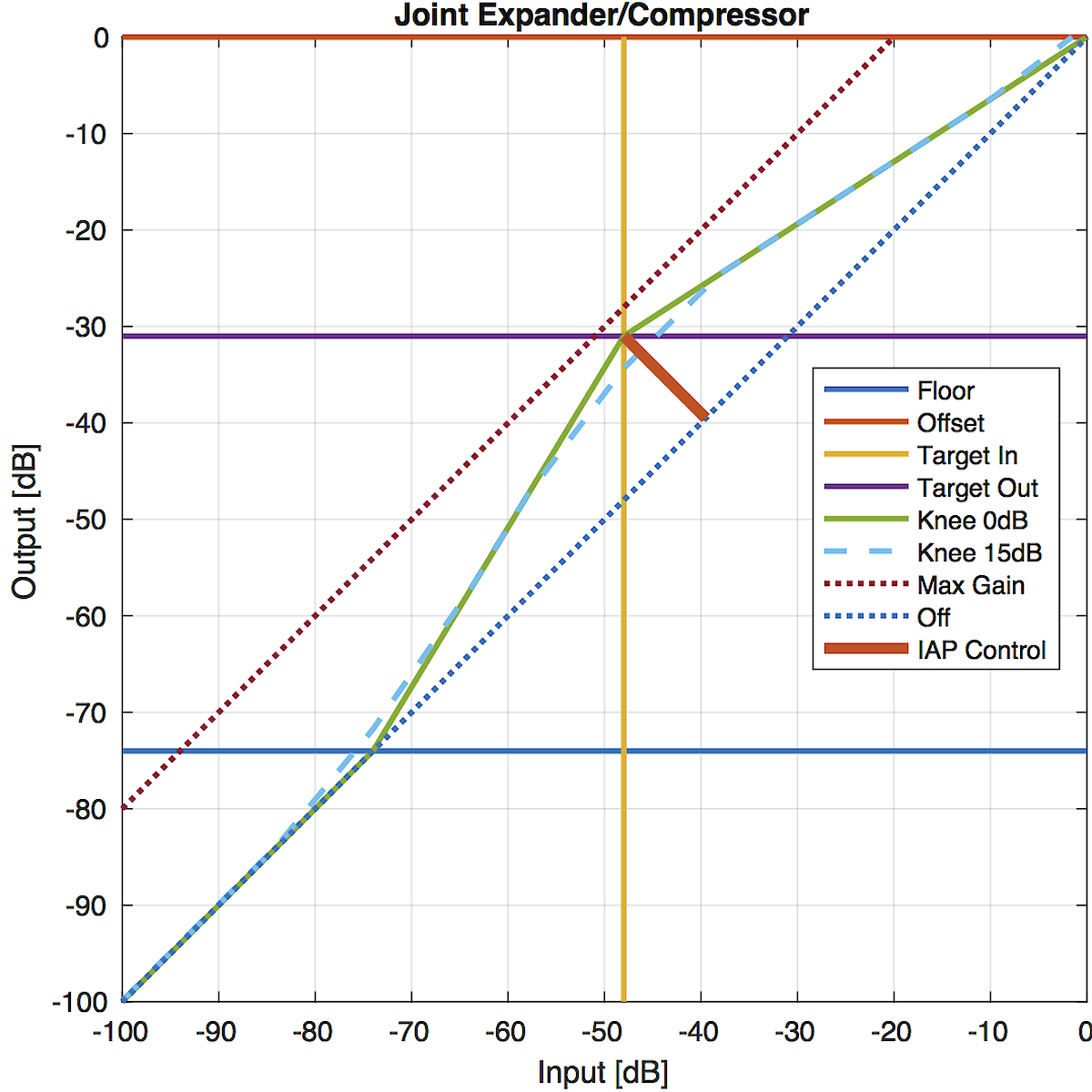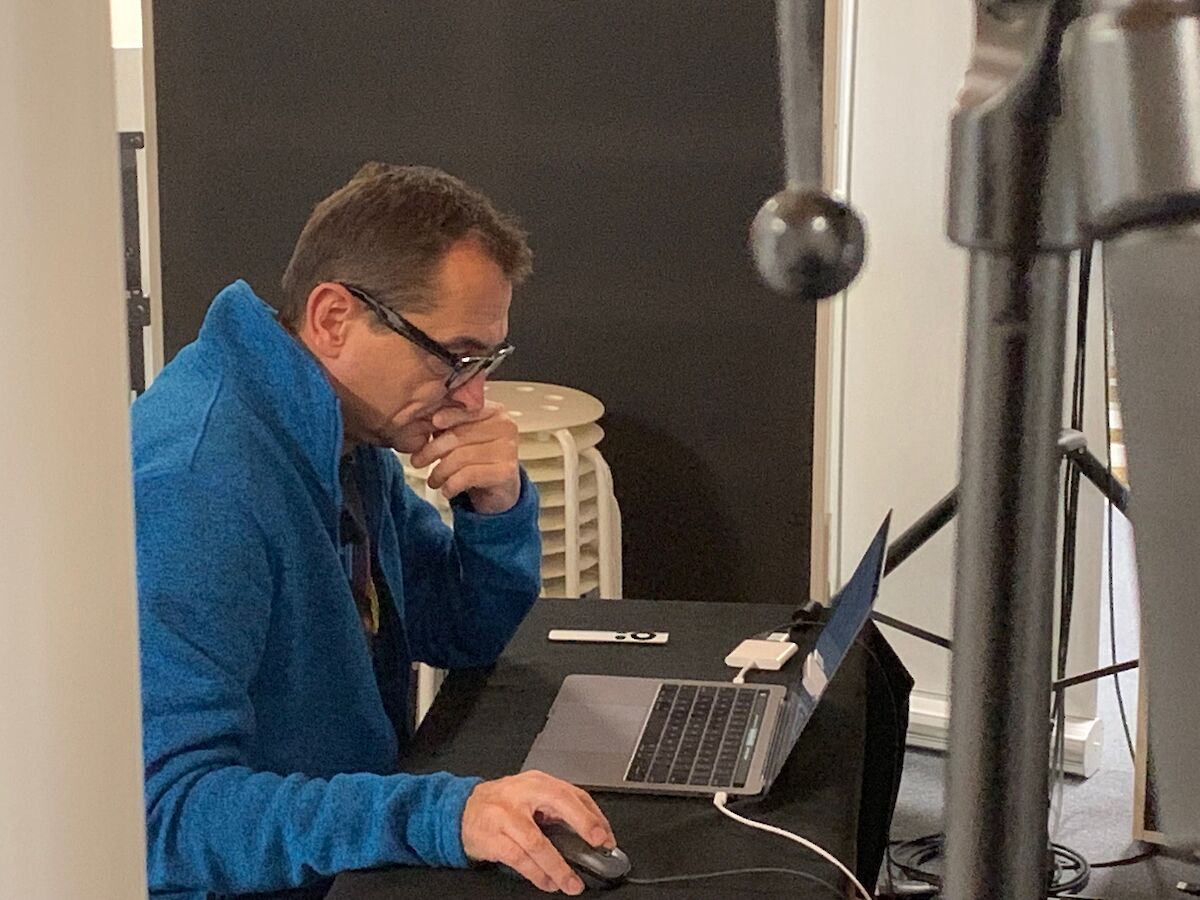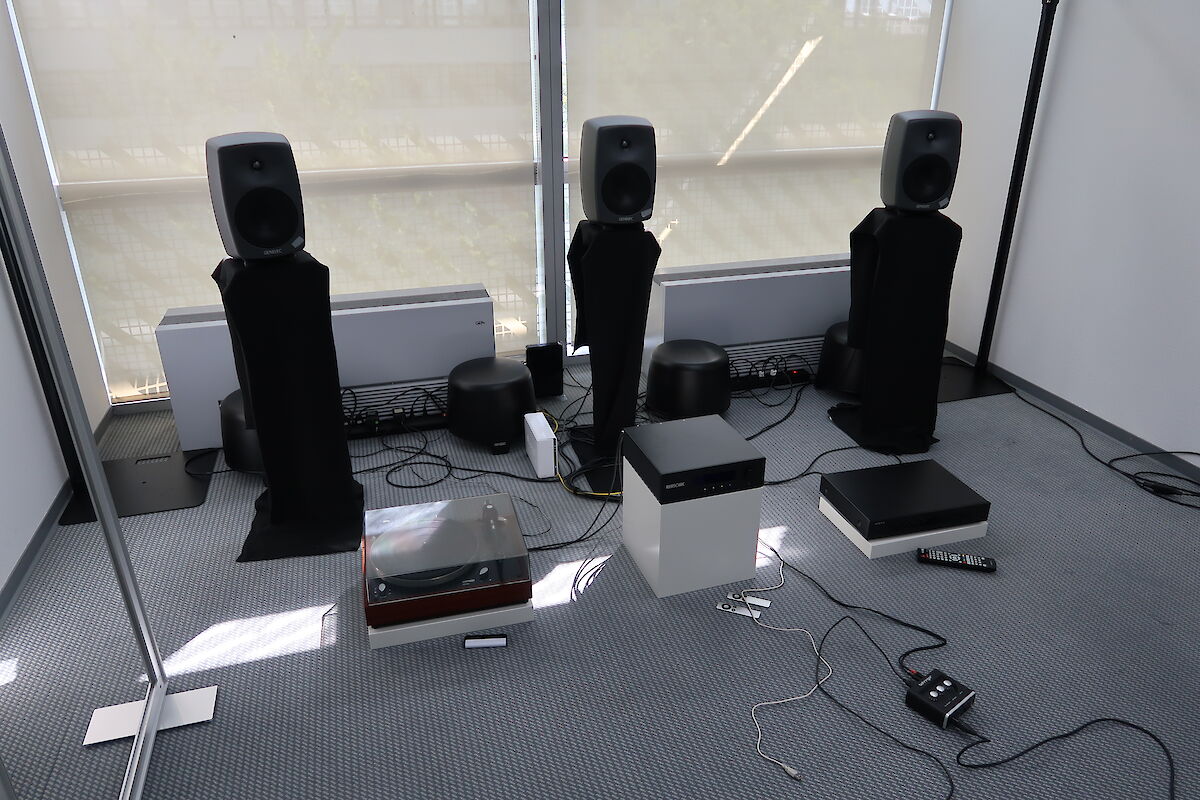30 April 2020
Christof Faller

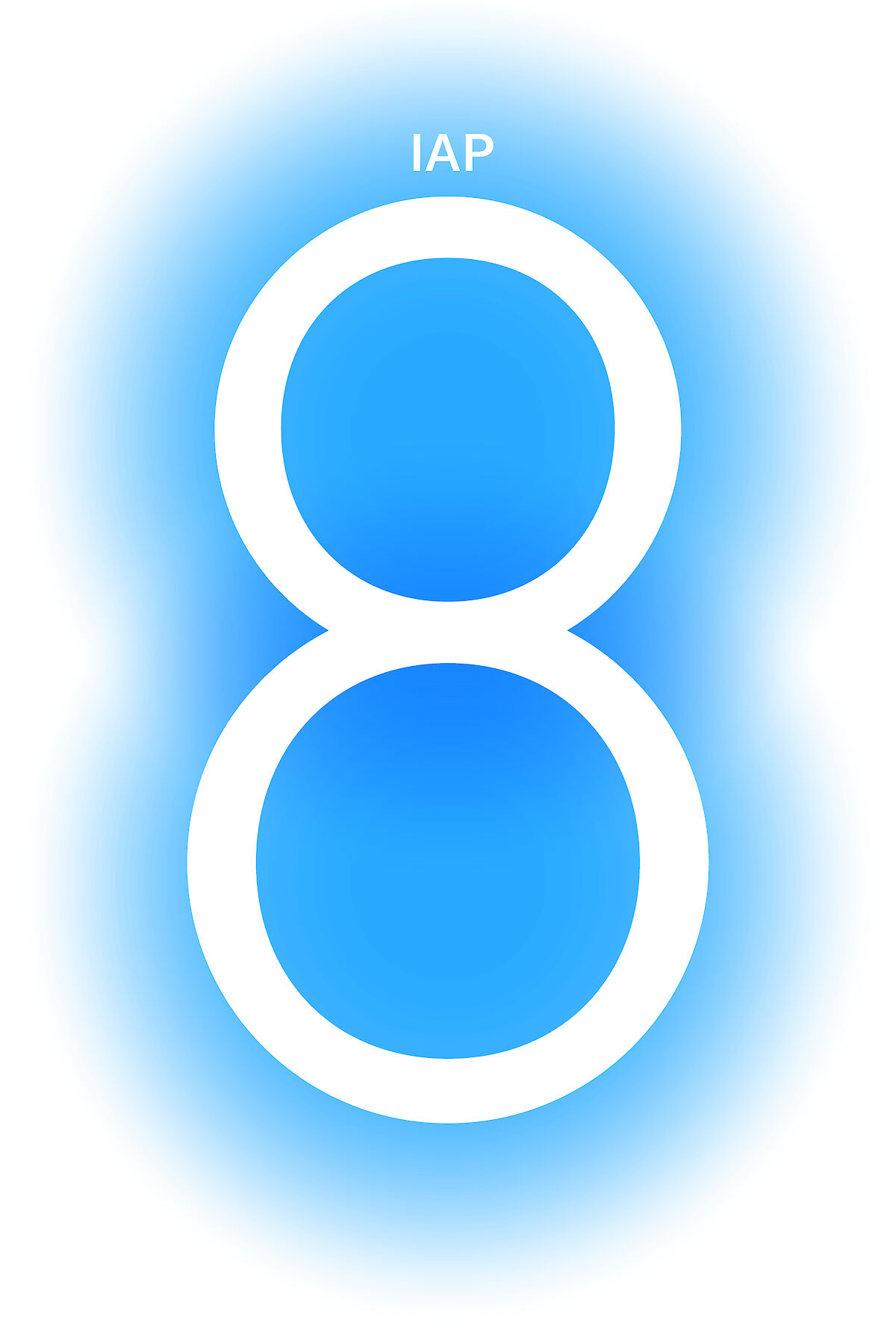
IAP Spring 2020 Update
IAP Firmware/Software Version 8.0
So far, DSP-based room adaptation has been limited to spectral modification. Or, in special cases, advanced room optimizers can reduce effect of earliest reflections, but limited strictly to a small sweet spot.
Illusonic Clarity 3 is an entirely new approach to room adaptation. It reduces reverberance of a room as if more absorbers were installed. Not only in a small sweet spot, but in the whole room. Bass is getting dryer and sound is getting more precise also at high frequencies. This is not only a marketing story. For the technically inclined, we have published an open access research paper on it.
All IAPs ever sold (since 2012) support this update. That’s what we call a time-less high-tech high-end product. Very rare species.
You can download this free-of-charge update here. All your IAP settings are maintained. Right away listen with improved quality after update. Get back to us for enabling measurement-tuned Clarity 3.
Besides revolutionary progress, IAP 8.0 features many other innovations and refinements:
improved remote-tuning, we can listen to your system realistically with headphones with headtracking
“talking display” makes IAP friends with blind people
Immersive greatly improved again
improved precision on many DSP parameters (delay is now sample accurate, …)
iOS remote control app support (via Raspberry PI)
improved multi-room and multi-zone support
improved automation over RS232 and network (via Raspberry PI)
see change-logs below for the many more refinements
Change-Logs (compared to previous latest version 7.1.3)
IAP Firmware & DSP:
Add Clarity 3 with Clarity Tuning
Improved Clarity without tuning (parameters, time-smoothing)
Improved Immersion (new decorrelator & reverb modules, randomization, pre-post processing)
Improved and renamed Immersion High and Size (to Tilt and RT60)
Added “Dry Center” option, to keep dialogue in stereo-movies dry (Depth and Immersion not acting on center and phantom center)
Added (USB) remote control commands for Ad Hoc Settings (balance, subsonic, sub gain, center gain, room mute, room gain)
Multi-room/zones improvements: room mute/gains are now stored permanently, added configurable room name, room mute: prevent that menu is entered unintentionally, during measurement now ignore room mute and room gain
Adhoc Center/Sub Gain: increased resolution from 0.5 to 0.1 dB
Bass/Treble Gain: increased resolution from 0.5 to 0.1 dB
Output Gain Trim range: increased from [-12..12] to [-20..20]
Output Delay Trim resolution: increased from 0.1 to 0.01 ms
EQ gain range: increased from [-18..6] to [-20..20] dB
Sub Overhead range: increased from [-10..20] to [-20..20] dB
Improved precision of all Illusonic algorithms by shifting operating range, such that the dynamic range of 32-bit float is more effectively used
Improved numerics on center extraction for better waveform quality
Added 3 new EQ types. IAP has now 27 different EQ types. The new filters are highpass with q-factor for raw bass driver equalization, and low/high shelving with q-factor for implementing smooth room curves with any slope
Increased Input Delay range to 0..200ms (from 0..100ms)
IAP Calibration control of IAP: all sound settings preset settings are now controlled by IAP Calibraiton (without overwriting any presets), previously only Gain/Delay, EQ, BMGT On/Off were controlled, this enables convenient listening and AB testing with now also Immersive
IAP Calibration control of IAP: “IAP CALIBRATION” is now shown on display while IAP Calibration controls IAP, and, except input and volume change, menus are disabled
Accessibility: added usb command to read out IAP display, updated iap library and iap_tool correspondingly
Improved reset command, such that no big clicks will be on loudspeakers (this happened when one would issue a firmware update without putting IAP to standby)
Improved microcontroller versioning, now pre-release versions are detected and user is prompted to update to final version
Phono in line-in mode now disables RIAA
Fixed input gain (was 2x in dB since IAP 7.1)
Analog-In now has always 20Hz low cut, to remove DC in input (on low levels this could freeze output-gain/volume, due to zero-crossing condition)
Fixed issue of temporary display freeze/corruption 1-2 seconds after IAP boot (with new network card)
IAP Configuration Software:
added Clarity 3 with Clarity Tuning
added Multiroom/Zones settings
added Ad Hoc settings (Balance, Center/Sub gain, etc.)
added support for 3 new eq types
increased input delay range to 200ms
IAP Calibration Software:
introduced dsp params presets, to quickly compare between any different settings
added new import config (.iap) function
added a new panel for Clarity 3 to tune it with measurement data
added Illusonic DSP along with gain/delay, eqs, etc. for real-time tuning
improved integration of Illusonic DSP with headphones auralization
added support for 3 new eq types
replaced phantom function with a more general sum function, to test phase consistency between loudspeakers
added “make mono” button to Auralization/Testing
added support for Bluetooth headtracking to Auralization
improved mean graph legends (now mean type is specified)
renamed Waterfall tab to Decay tab and increased number of range options
added correlation coefficient for crossover optimization
fixed bug, where tone control was not simulated when eq was off
fixed bug, where disable eq function did not work properly









